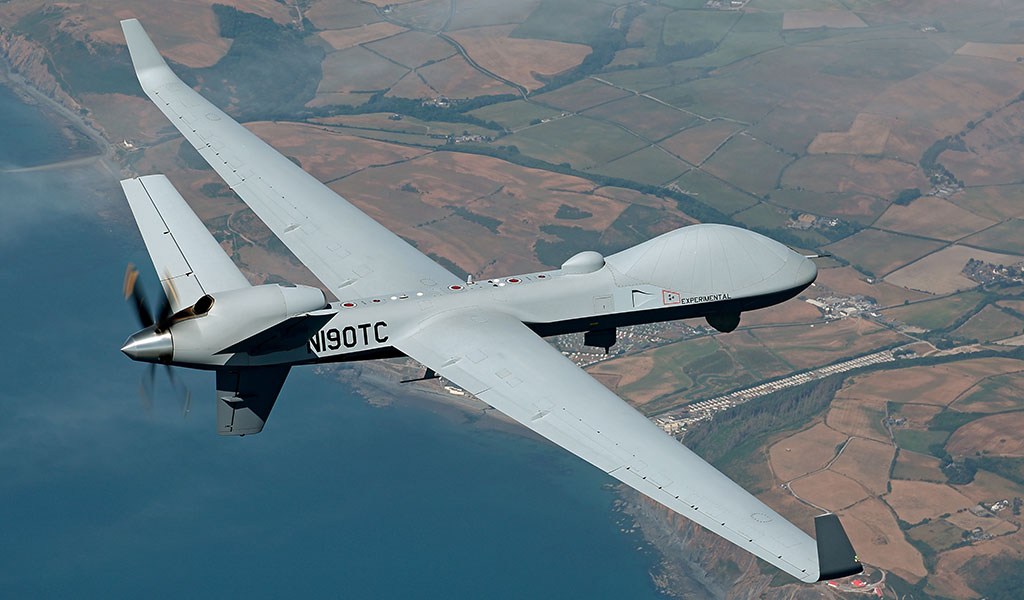Music
Trailers
DailyVideos
India
Pakistan
Afghanistan
Bangladesh
Srilanka
Nepal
Thailand
StockMarket
Business
Technology
Startup
Trending Videos
Coupons
Football
Search
Download App in Playstore
Download App
Best Collections
Technology
Facebook latest colonization of Instagram has begun. Facebook is testing the option to cross-post Stories to Instagram, instead of just vice-versa. Hopefully, that means the two apps will finally sync up the &already viewed& status of cross-posted Stories so we don&t have to watch re-runs any more, as I harped about in January.
If fully launched, the cross-posting feature could save social media managers and average users time while letting them maximize the views on the content they create. It could also give a little boost to the total Stories available on Instagram so its algorithm has more to choose from when ranking what it shows first.

But the change could also been seen as the most invasive injection of parent company Facebookidentity into Instagram — which has been steadily increasing since Instagramco-founders left the company in late 2018 as their autonomy dwindled. Facebook has already pasted an &Instagram & From Facebook& title screen into the photo-sharing appboot-up phase, and added an Open Facebook button to its settings menu. Instagram added cross-posting of its Stories to Facebook in October 2017, allowing its parent to piggyback on the popularity of its ephemeral content.
Facebook Stories, Instagram Stories and WhatsApp Status all had 500 million daily users as of a year ago, while Snapchat as a whole has just 218 million users.
The screenshot of the Facebook-to-Instagram cross-posting feature was generated from theFacebook for Androidapp code by Jane Manchun Wong. Shethe renowned reverse engineering expert who has furnished TechCrunch with tips on dozens of unreleased features that went on to officially launch. When you&ve shot a Facebook Story and are about to post it, you can tap Privacy to review who you&re sharing with. In addition to the Public, Friends, Custom and Hide From options, Facebook is testing a Share To Instagram toggle that appears to turn on continuous cross-posting of that post and future ones.
A Facebook spokesperson tells me that the company is now formally testing the cross-posting feature to make it easier to share moments with the people who matter to you, as people might have different audiences and followers on Facebook versus Instagram. Facebook will continue to explore options for simplifying and improving how Stories work across its apps. That means itout of the internal-only prototyping phase and is now being tested with users in the wild.
With any luck, Facebook and Instagram will eventually sync up data about which Stories you&ve watched on either app, and avoid showing you exact copies of ones you&ve already seen. I made my case for this to Instagramleadership at a recent press dinner, noting how reruns waste hundreds of millions of peopletime and lead them to close Stories or the app altogether. I asked Facebook about that specifically; they declined to comment.
Creating two-way interoperability of Stories is a precursor to Facebookefforts to unify its Messenger, WhatsApp and Instagram Direct chat features. That could extend end-to-end encryption across the apps, protecting messages from prying eyes. But therebeen government grumbling about how encryption could hide the activity of criminals, and some see intertwining the chat features as a way to make it harder for regulators to break up Facebook.
- Details
- Category: Technology Today
Read more: Facebook Stories tests cross-posting to its pet, Instagram
Write comment (93 Comments)The disinformation wars are heating up as the U.S. barrels toward the 2020 presidential election, leaving tech companies again uncomfortable in the role of referee.
On Monday, Facebook joined Twitter in flagging a video shared by White House Director of Social Media Dan Scavino, marking it as &partly false& and limiting its ability to spread on the platform. In the video, presidential candidate and former Vice President Joe Biden warns about the potential of reelecting Trump, but the viral clip is edited down to a portion that misleadingly makes it sound as though Biden is endorsing Trump.

&Fact-checkers rated this video as partly false, so we are reducing its distribution and showing warning labels with more context for people who see it, try to share it, or already have,& a Facebook spokesperson told TechCrunch. &As we announced last year, the same applies if a politician shares the video, if it was otherwise fact checked when shared by others on Facebook.&
Over the weekend, President Trump retweeted the video to his 73.5 million Twitter followers, stating &I agree with Joe!&
On Twitter, Scavino insisted &The video was NOT manipulated,& agreeing with a tweet that argued all clips on Facebook would meet the same criteria.
Flagging the video sets an interesting precedent, particularly given that last month both platforms declined to act on a deceptively edited video depicting Speaker of the House Nancy Pelosi ripping up President Trumpstate of the union address. While Pelosi did in fact rip up the address, the video misrepresented the order of events, misleadingly showing Pelosi shredding the speech as Trump honored members of the military.
At the time, Facebook Policy Communications lead Andy Stone aggressively defended Facebookdecision to let the video spread in a testy exchange with Pelosi Deputy Chief of Staff Drew Hammill, who argued that every day Facebook declined to remove the video &is another reminder that they care more about their shareholders& interests than the publicinterests.& Stoneresponse at the time was combative.
TechCrunch has reached out to both platforms to clarify how the Biden video violates their policies while the Pelosi video did not.
As Bidencampaign ramps after a much-needed shot in the arm from Super Tuesday, the internet is rife with videos of the former vice presidentmany gaffes. While critics leverage Bidenstumbles as evidence that he is unfit for the presidency, an interview earlier this year revealed that at least some of his occasionally faltering speech is likely a result of a lifelong stutter, a disorder characterized by disruptions to the flow of speech.
In a statement prior to Facebookdecision to label the video on Monday, Biden Campaign Manager Greg Schultz slammed Facebook&malfeasance& around disinformation. &Facebook won&t say it, but it is apparent to all who have examined their conduct and policies: they care first and foremost about money and, to that end, are willing to serve as one of the worldmost effective mediums for the spread of vile lies.&
- Details
- Category: Technology Today
Read more: Facebook flags Biden video from Trump’s social media director as ‘partly false’
Write comment (97 Comments)Two years ago, dormmates Justin Wenig and Nicholas Diao struggled to get into a popular computer science class at Columbia University . The duo eventually got into that class, but after the initial frustration around class scheduling, they decided &it was an obvious problem for a computer to solve.&
Wenig and Diao are the founders of Coursedog, a software startup that wants to create an operating system for universities to better schedule classes, professors and sections based on demand and interest. &Think of it,& Wenig said, &as a Superhuman for class scheduling systems.&
Today, Coursedog announced it has raised $4.2 million from a crop of investors, including First RoundJosh Kopelman. The company did not disclose any other investors, and there were no board seats taken on during the financing round. The Y Combinator graduatetotal known venture capital funding is now $5.7 million. Investors in the company include FoundersX Venture, EFund and Jinal Jhaveri, the former CEO of SchoolMint, a school enrollment startup.
The funding will be used to build out Coursedogproduct line on projecting course demand, the correct number of seats a school should offer per course and student success.
&A lot of people think higher [education] is a slow institution, but institutions are really thinking about how to promote student success,& Wenig said in an interview with TechCrunch. But instead of adopting any technology, universities are careful about sharing protected data, he continued.
Competition-wise, Wenig said that Blackboard, a learning management startup, continues to be one of the two &big software tools within universities.& Coursedog sits on top of the other software tool: the student information system, used by administrators that need to plan student schedules.
After Wenig and Diao cold-called hundreds of colleges, Columbia Law School was the first contract signed. Since then, the startup has landed deals with more than 60 colleges and universities of all sizes.
Coursedogclientele fits a range. The smallest client, per Wenig, is the Laguna School of Art and Design, which has roughly 600 students. Wenig also noted they cater to a mix of public and private schools, with public schools often &being the most innovative.&
&A lot of states offer incentive-based funding,& Wenig said. &In Utah, the amount of funds you might get from the state as a public institution is directly proportional to how well you&re using your space on campus.& He claims that Coursedog helps improve graduation rates by getting more students into the right classes.
&Today, we are just building apps on top of the Student Information System to help schools with scheduling, curriculum planning and catalog publishing and are slowly eating away functionality that schools would normally be doing with spreadsheets and native to the SIS,& he noted.
Coursedog plans to scale to 100 more universities in the next year, and will use the new funding to help &grow up& its production.
- Details
- Category: Technology Today
Read more: Coursedog lands $4.2 million to make class scheduling smarter
Write comment (97 Comments)
According to a report from 9to5mac, Apple could be working on full cursor support for the next major version of iOS and iPadOS. The report is based on code of an early version of iOS 14 and iPadOS 14.
If Apple ships that new feature, it means that you&ll be able to use a Bluetooth mouse or trackpad with your iPad to move a cursor around the screen. It would work pretty much like a mouse on a desktop computer.
Apple has already added basic support for an external mouse in the current version of iPadOS. It can be enabled in the Accessibility settings. But it basically mimics a finger on the screen.
With full cursor support, you can expect your cursor to change when you hover over a link, for instance. You could right click on some elements, as well.
According to this early version of iOS 14, the cursor will disappear after a few seconds if you don&t move the mouse. It reappears when you move the mouse again. On a Mac, the cursor disappears when you start typing text.
There are also multiple signs that seem to indicate that Apple is working on a new Smart Keyboard for the iPad and trackpad shortcuts — tap to click, tap with two fingers to right click, etc. It could mean that the next Smart Keyboard will feature a trackpad below the keyboard.
Although iOS and iPadOS share the same code base, I wouldn&t expect cursor support on the iPhone. Cursor support seems to be particularly useful on a bigger screen, such as the iPad. You can also connect the most recent iPad Pro models to an external monitor thanks to its USB-C port.
In 2017, with iOS 11, Apple brought many design metaphors from the Mac to the iPad. The company introduced a Dock at the bottom of the screen as well as a new Files app. iOS still feels like a completely different operating system from macOS. But it is interesting to see that some important desktop features also work quite well on an iPad.
- Details
- Category: Technology Today
Read more: Apple could add mouse cursor support to the iPad
Write comment (91 Comments)The Royal Air Force delayed safety warnings about the first transatlantic flight of a new Reaper aircraft in 2018, over fears that they could tip anti-drone protestors to its arrival in the U.K., according to emails seen by TechCrunch.
On July 11, 2018, the General Atomics SkyGuardian, a variant of the U.S. Reaper drone that killed Iranian military leader Qasem Soleimani in January, flew from Grand Forks, N.D., to RAF Fairford in Gloucestershire. This was the first and only time that a drone had made such a journey through U.K. civilian airspace, and it paved the way for an even more ambitious test due to happen in the U.S. later this month.
The 5.5-metric ton aircraft was remotely piloted throughout its 24-hour journey using satellite communications to relay video, instrument data and air traffic control instructions to pilots at General Atomics& airbase in North Dakota.
The historic flight, which passed directly over Hereford and Gloucester, concluded without incident at RAF Fairford, where the drone went on static display during the Royal International Air Tattoo, a military air show.
General Atomics chief executive Linden Blue said: &The successful flight of the [SkyGuardian] is the culmination of the hard work and innovation of our dedicated employees, and the strong relationships that we enjoy with the RAF, the U.K. Civil Aviation Authority (CAA), the Royal International Air Tattoo and our U.K. industry partners.&
However, emails obtained under U.K. Freedom of Information legislation, and first reported by The Guardian, show that those relationships were tenuous at best, with the CAA distrusting General Atomics, questioning the U.S. Federal Aviation Administrationoversight of the SkyGuardian and facing sustained pressure from the Ministry of Defence to delay safety measures.
The CAA, the U.K.aviation regulator, supplied more than 1,600 pages of emails regarding the flight. All were heavily redacted, including most names and job titles.

Plan for the final leg of the SkyGuardiantransatlantic flight, travelling between Ireland and England, then flying over Wales to land at Fairford airbase (Credit: General Atomics/CAA)
It is unclear who first suggested a high-profile transatlantic Reaper flight to mark the RAFcentenary and showcase the new drone at the Air Tattoo. But by early February, the CAA was already warning of pressure from the military to allow the flight.
&We will need to be fully satisfied that the flight can be conducted in a safe manner before we will approve this,& wrote a CAA manager to Mark Swan, then the regulatordirector of Safety. &Note that there is likely to be extensive interest from MoD sources… and hence some higher level pressure focussed on the CAA for this flight to take place.&
That is because the RAF is in the process of procuring 20 next-generation Reaper drones from General Atomics in a deal worth more than £1.1 billion (US$1.4 billion). These drones, which the RAF will call Protector, are a military version of the SkyGuardian that undertook the transatlantic flight.
The RAF already has 10 Reaper drones, a larger and more heavily armed variant of the Predator. Since 2008, these have been used to carry out hundreds of deadly strikes in Afghanistan, Iraq and Syria. While these drones are remotely controlled by RAF pilots in Nevada and Lincolnshire, the Reapers are not allowed to share civilian airspace with passenger jets. This means that they have to be based very near to where they operate — an expensive and limiting requirement.
A drone like the SkyGuardian that could fly amid commercial aircraft for many thousands of miles would enable the RAF to attack targets across much of the world from the bases in Britain. &A drone that can fly in a civilian airspace is so much more versatile,& says Arthur Holland Michel, co-director of the Center for the Study of the Drone at Bard College in New York.
When the Protector drones enter service in the U.K. in 2024, they will carry two British-made weapons: a GPS- and laser-guided bomb called the Paveway IV; and a semi-autonomous missile called Brimstone. Although the transatlantic drone would be unarmed, the RAF saw it as a potentially lucrative sales demonstration for other countries.
&The eyes of a number of potential customer nations such as [Australia] and [Canada] will be on the event and the outcome could be significant for UK prosperity,& wrote the RAFprogram manager for Protector in an internal email to the MoD.
The CAA was skeptical from the outset. &The general impression of General Atomics… is that they will try to ‘push the limits& and over promise in many areas,& wrote a safety official in March. &We need to tread really carefully on this one & the fact that MoD is involved is not a reason for us to roll over and just let this happen.&
The regulatorconcerns were simple. How would the aircraft know where it was? How would pilots thousands of miles away know what was happening around the drone? And how could they ensure they had control of it at all times?
The CAA has an exhaustive procedure for assessing the safety of aircraft, and another long list of requirements for allowing drones to take to the skies above Britain. There was no way that the SkyGuardian could be properly tested by the U.K. regulator in a few short months before the planned flight in July.
Instead, General Atomics could apply for an overflight exemption — permission for a single flight on a given day. This exemption would rely on another credible organisation attesting to the airworthiness of the aircraft, in this case, the U.S. Federal Aviation Administration (FAA).

The problem was that the FAA had itself placed severe limits on how and where the SkyGuardian could operate. It usually required the SkyGuardian to have a visual observer spotting for the drone from a nearby chase plane whenever it was below 18,000 feet. The FAA also banned the drone from flying over most densely populated areas.
&I do not really see how such limitations would… allow the aircraft to commence the first part of its flight out of the United States, let alone over Canada and then into the oceanic system,& wrote a CAA safety official to General Atomics. &The limitation regarding overflight of densely populated areas… will bring in additional problems within the UK (which is already quite densely populated).&
For its part, the FAA insisted that its authority finished at the edge of American airspace. &Whether manned or unmanned, [we] cannot provide any sort of safety statement that would ensure safe operations in UK airspace,& wrote an FAA official to the CAA in March.
&If General Atomics can&t get the FAA to back up the safety of the aircraft, then why should we be letting it into our airspace?,& wondered one CAA official.
It seemed as though the same thought had occurred to authorities in Ireland. The shortest route for many transatlantic flights between the U.S. and the U.K. is directly across Ireland. However, a track of the SkyGuardianroute shows a distinct kink to keep the drone out over the Atlantic and the Irish Sea.
In April, a CAA airspace official reported a phone call with their counterpart at the Irish Aviation Authority: &I explained why the decision was made to route south of Irish landmass… However, due to how the Irish will be segregating the airspace and in addition to the commercial traffic routing across the Atlantic, they have requested that [SkyGuardian] now routes [even] further south.&
In aviation, segregation is when an aircraft does not fly in close proximity to other planes but instead has a corridor carved out for its sole use. Although General Atomics& ultimate aim is for the SkyGuardian (and the RAFProtector) to use advanced sensors to autonomously detect and avoid hazards, the entire transatlantic flight would take place in segregated airspace, at least several miles from other aircraft.
Even so, the FAA would have had to adjust the SkyGuardiandomestic certification to allow it to fly over cities, and without a chase plane. &In its current format and limitations there is not a lot the CAA can do with this,& wrote a CAA official. &We need to sit down and discuss this, as there are political forces at play here and [we are] getting a lot of pressure from the MoD.&
Eventually, the FAA relented, relaxing the SkyGuardianrestrictions for the transatlantic flight. It does not appear that the CAA had any say in setting those conditions, which were redacted in the CAA emails. However, the drone flew directly over the city of Gloucester and did not have a chase plane.
Following a meeting about the proposed flight in early June, one CAA official reported that the regulator was &simply taking the FAAexperimental certification and ‘anglicising& it.&
Now that the flight seemed as if it would actually happen, attention within the RAF and CAA shifted to public relations.
Although the SkyGuardian would be displayed at the Air Tattoo with British bombs and missiles, the RAF wanted the flight and SkyGuardian to sound as innocuous as possible. RAF High Command edited an article intended for the defence publication Janeto remove references to the SkyGuardianlarge weapons load and its ability to &greatly [compress] the sensor to shooter kill-chain between detection and an armed response.&
&I have cut out the weapons bit as this detracts from the article and moves focus from the achievement of the flight to how easily we can kill people,& wrote an RAF officer. The same officer also added a paragraph about how the SkyGuardian could provide humanitarian assistance, disaster relief, coastal surveys, search and rescue and even monitor flood defences.
&This is all part of the narrative that [remote piloted aircraft] are a good thing and I am keen to keep the wind out of the anti-drone lobby sails,& he wrote.
General Atomics was now excited to announce the upcoming flight as quickly as possible. But on June 11, a CAA official noted that a press release from General Atomics had been blocked by the MoD &due to concerns about the potential for &anti (military) drone& protests hampering the arrival at Fairford if the flight is publicised too early.&
A week later, the MoD suggested that the CAA only announce the 4,300-mile transatlantic crossing just six days before the flight itself.
&We have significant concerns this is too late,& complained a CAA official to Mark Swan, its head of safety. &[We] endeavour to provide at least 60 days& notification of large airspace restrictions to notify other airspace users… The longer we leave to notify, the higher the risk of airspace infringements.&
A particular worry was a British Gliding Association competition scheduled to take place just 10 miles from the SkyGuardianairspace on the day of its flight. If one of the gliders should stray into the dronepath, it could risk a catastrophic collision.
&Sadly, I have had a huge kickback from the RAF regarding going public,& wrote another CAA official. &I have been informed that the RAF [is trying to] delay this as long as possible…. Patience is running thin thanks to the MoD.&
Ultimately, the CAA disregarded the militaryconcerns, and issued its airspace warning at the end of June. Only one decision was left to be made: What should the SkyGuardian be called?
One CAA airspace expert suggested calling it nothing at all, with the warning vaguely referencing &a civilian aircraft, certificated and registered through the FAA… to mitigate the risk of anti-drones protests for [the] MoD.&
Another CAA official agreed that the word &drone& should be avoided wherever possible. &[We can] refer to it as either an Unmanned Aircraft or as a Remotely Piloted Aircraft… I believe the terminology of ‘drone& does not fit this aircraft for a number of reasons.&
RAF High Command concurred, with an RAF officer writing: &It is clear from our teamwork that we are all consistent and clear on each otherpriorities moving forward, particularly with the incorrect use of ‘drone&.&

Experimental SkyGuardian drone flying over the UK on the first ever transatlantic drone flight through civilian airspace (Credit: General Atomics)
At last, the CAA and the RAF could agree on something. Whatever flew uncrewed from America to Britain, with its remote pilot, satellite control and ability to carry multiple precision-guided weapons, it certainly wasn&t a drone.
The flight itself went pretty much to plan. The SkyGuardian took off from Grand Forks just after midday on 10 July, and flew through the night at 27,000 feet over Canada and the North Atlantic on a meticulously charted route. Pilots in North Dakota, controlling the SkyGuardian in shifts, connected with U.S., Canadian, Irish and British air traffic controllers.
Arriving off the coast of Wales, the SkyGuardian descended into a holding pattern above Cirencester before coming in to land at Fairford, using an automated landing system. There were no anti-drone protestors waiting to greet it.
After the Tattoo was over, the SkyGuardian was dismantled and flown back to the U.S. as cargo, its mission complete.
In January 2019, General Atomics announced that defense contractor BAE Systems was developing a plan for regular RAF Protector operations in U.K. civilian airspace. In November, the Australian government announced that it would spend $1.3 billion Australian dollars (£670 million) to acquire a fleet of SkyGuardians as its next unmanned aerial vehicle. Canada and Greece are also reported to be considering purchasing the aircraft.
But the jewel in the crown for General Atomics is the U.S. market. On March 23, a SkyGuardian equipped with an experimental autonomous detect-and-avoid system and a cutting-edge surveillance radar will take to the skies above Southern California, fully integrated with normal air traffic control for the first time. According to a filing with the FCC, it will fly for over 100 miles, conducting aerial inspection and surveillance of &critical infrastructure owned by commercial and civil entities.&
&This type of commercial mission has never been done with a [drone] anywhere in the United States,& wrote General Atomics. &It is a first of its kind and will serve as a proof of concept for future… missions.&
If the test goes well, military and commercial Reapers and SkyGuardians could soon start flying over U.S. cities, either on their way to foreign war zones, or with their tireless digital eyes gathering data on America itself.
- Details
- Category: Technology Today
Read more: The risky first transatlantic flight of a Reaper drone
Write comment (96 Comments)

Infinix is no stranger to bringing various elements to the budget segment. The new Infinix S5 Pro does that with the pop-up selfie camera.
The phone was originally teased a month ago, which confirmed that we will be getting a display with no notch. The other specifications have also been revealed now. We’re looking at a 6.53-inch LCD panel with no n
- Details
- Category: Technology Today
Read more: Infinix S5 Pro is the new cheapest phone with a pop-up camera
Write comment (100 Comments)Page 1262 of 1416

 18
18





